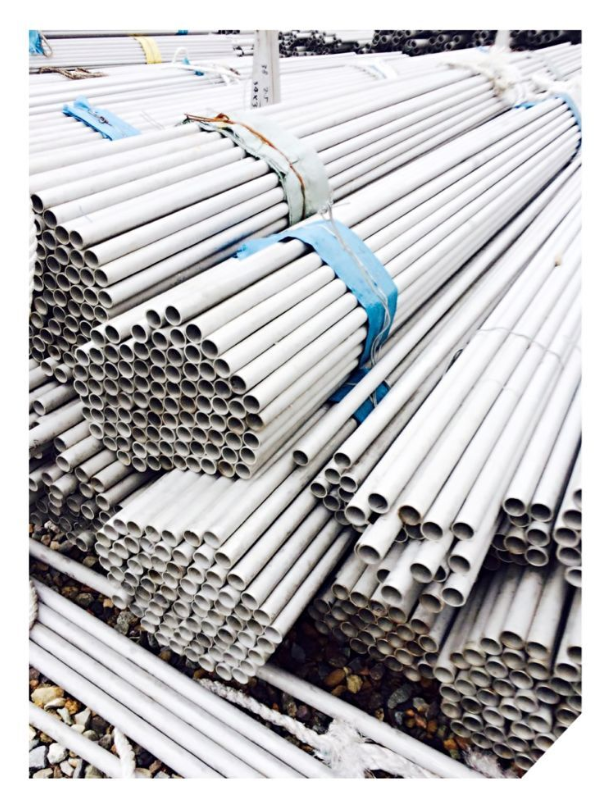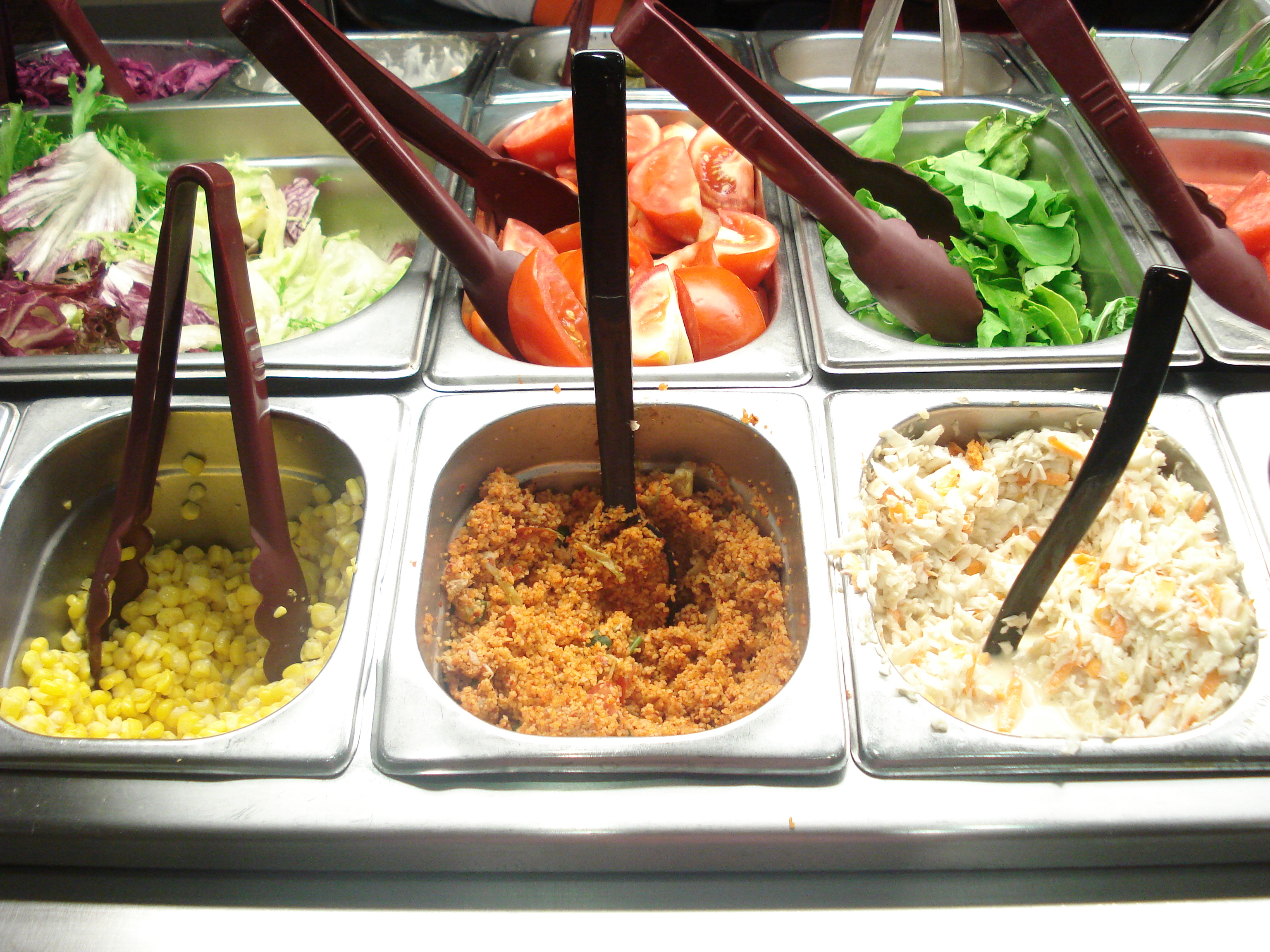SAE 304 stainless steel on:
[Wikipedia]
[Google]
[Amazon]
 SAE 304 stainless steel is the most common
SAE 304 stainless steel is the most common
. The composition was developed by W. H. Hatfield at Firth-Vickers in 1924 and was marketed under the trade name "Staybrite 18/8". It is specified by
 304 stainless steel is used for a variety of household and industrial applications such as food handling and processing equipment, screws, machinery parts, utensils, and exhaust manifolds. 304 stainless steel is also used in the architectural field for exterior accents such as water and fire features. It is also a common coil material for vaporizers.
Early
304 stainless steel is used for a variety of household and industrial applications such as food handling and processing equipment, screws, machinery parts, utensils, and exhaust manifolds. 304 stainless steel is also used in the architectural field for exterior accents such as water and fire features. It is also a common coil material for vaporizers.
Early
 SAE 304 stainless steel is the most common
SAE 304 stainless steel is the most common stainless steel
Stainless steel is an alloy of iron that is resistant to rusting and corrosion. It contains at least 11% chromium and may contain elements such as carbon, other nonmetals and metals to obtain other desired properties. Stainless steel's r ...
. The steel contains both chromium
Chromium is a chemical element with the symbol Cr and atomic number 24. It is the first element in group 6. It is a steely-grey, lustrous, hard, and brittle transition metal.
Chromium metal is valued for its high corrosion resistance and hard ...
(between 18% and 20%) and nickel
Nickel is a chemical element with symbol Ni and atomic number 28. It is a silvery-white lustrous metal with a slight golden tinge. Nickel is a hard and ductile transition metal. Pure nickel is chemically reactive but large pieces are slow t ...
(between 8% and 10.5%) metals as the main non-iron
Iron () is a chemical element with symbol Fe (from la, ferrum) and atomic number 26. It is a metal that belongs to the first transition series and group 8 of the periodic table. It is, by mass, the most common element on Earth, right in ...
constituents. It is an austenitic stainless steel
Austenitic stainless steel is one of the five classes of stainless steel by crystalline structure (along with ''ferritic'', '' martensitic, duplex and precipitation hardened''). Its primary crystalline structure is austenite (face-centered cubic ...
. It is less electrically and thermally conductive
In physics and electrical engineering, a conductor is an object or type of material that allows the flow of charge (electric current) in one or more directions. Materials made of metal are common electrical conductors. Electric current is gene ...
than carbon steel
Carbon steel is a steel with carbon content from about 0.05 up to 2.1 percent by weight. The definition of carbon steel from the American Iron and Steel Institute (AISI) states:
* no minimum content is specified or required for chromium, coba ...
. It is magnetic, but less magnetic than steel. It has a higher corrosion
Corrosion is a natural process that converts a refined metal into a more chemically stable oxide. It is the gradual deterioration of materials (usually a metal) by chemical or electrochemical reaction with their environment. Corrosion engi ...
resistance than regular steel and is widely used because of the ease in which it is formed into various shapes.Data sheet on SAE 304 stainless steel. The composition was developed by W. H. Hatfield at Firth-Vickers in 1924 and was marketed under the trade name "Staybrite 18/8". It is specified by
SAE International
SAE International, formerly named the Society of Automotive Engineers, is a United States-based, globally active professional association and standards developing organization for engineering professionals in various industries. SAE Internatio ...
as part of its SAE steel grades
The SAE steel grades system is a standard alloy numbering system (SAE J1086 - Numbering Metals and Alloys) for steel grades maintained by SAE International.
In the 1930s and 1940s, the American Iron and Steel Institute (AISI) and SAE were both i ...
. Outside the US it is commonly known as A2 stainless steel, in accordance with ISO 3506 for fasteners
A fastener (US English) or fastening (UK English) is a hardware device that mechanically joins or affixes two or more objects together. In general, fasteners are used to create non-permanent joints; that is, joints that can be removed or disman ...
. In the commercial cookware
Cookware and bakeware is food preparation equipment, such as cooking pots, pans, baking sheets etc. used in kitchens. Cookware is used on a stove or range cooktop, while bakeware is used in an oven. Some utensils are considered both cookware ...
industry it is known as 18/8 stainless steel. In the unified numbering system
The unified numbering system (UNS) is an alloy designation system widely accepted in North America. Each UNS number relates to a specific metal or alloy and defines its specific chemical composition, or in some cases a specific mechanical or physic ...
it is UNS S30400 The Japanese equivalent grade of this material is SUS304. It is also specified in European norm 1.4301.
Chemical Composition
Corrosion resistance
304 stainless steel has excellent resistance to a wide range of atmospheric environments and many corrosive media. It is subject to pitting and crevice corrosion in warmchloride
The chloride ion is the anion (negatively charged ion) Cl−. It is formed when the element chlorine (a halogen) gains an electron or when a compound such as hydrogen chloride is dissolved in water or other polar solvents. Chloride s ...
environments and to stress corrosion cracking
Stress corrosion cracking (SCC) is the growth of crack formation in a corrosive environment. It can lead to unexpected and sudden failure of normally ductile metal alloys subjected to a tensile stress, especially at elevated temperature. S ...
above about 60°C. It is considered resistant to pitting corrosion in water with up to about 400 mg/L chlorides at ambient temperatures, reducing to about 150 mg/L at 60°C.
304 stainless steel is also very sensitive at room temperature to the thiosulfate
Thiosulfate ( IUPAC-recommended spelling; sometimes thiosulphate in British English) is an oxyanion of sulfur with the chemical formula . Thiosulfate also refers to the compounds containing this anion, which are the salts of thiosulfuric acid, e ...
anions released by the oxidation
Redox (reduction–oxidation, , ) is a type of chemical reaction in which the oxidation states of substrate change. Oxidation is the loss of electrons or an increase in the oxidation state, while reduction is the gain of electrons or ...
of pyrite
The mineral pyrite (), or iron pyrite, also known as fool's gold, is an iron sulfide with the chemical formula Iron, FeSulfur, S2 (iron (II) disulfide). Pyrite is the most abundant sulfide mineral.
Pyrite's metallic Luster (mineralogy), lust ...
(as encountered in acid mine drainage
Acid mine drainage, acid and metalliferous drainage (AMD), or acid rock drainage (ARD) is the outflow of acidic water from metal mines or coal mines.
Acid rock drainage occurs naturally within some environments as part of the rock weathering ...
) and can undergo severe pitting corrosion
Pitting corrosion, or pitting, is a form of extremely localized corrosion that leads to the random creation of small holes in metal. The driving power for pitting corrosion is the depassivation of a small area, which becomes anodic (oxidation re ...
problems when in close contact with pyrite
The mineral pyrite (), or iron pyrite, also known as fool's gold, is an iron sulfide with the chemical formula Iron, FeSulfur, S2 (iron (II) disulfide). Pyrite is the most abundant sulfide mineral.
Pyrite's metallic Luster (mineralogy), lust ...
- or sulfide
Sulfide (British English also sulphide) is an inorganic anion of sulfur with the chemical formula S2− or a compound containing one or more S2− ions. Solutions of sulfide salts are corrosive. ''Sulfide'' also refers to chemical compounds la ...
-rich clay
Clay is a type of fine-grained natural soil material containing clay minerals (hydrous aluminium phyllosilicates, e.g. kaolin, Al2 Si2 O5( OH)4).
Clays develop plasticity when wet, due to a molecular film of water surrounding the clay pa ...
materials exposed to oxidation.
For more severe corrosion conditions, when 304 stainless steel is too sensitive to pitting or crevice corrosion by chlorides or general corrosion in acidic applications, it is commonly replaced by 316 stainless steel.
304 and 302 Stainless Steels are subject to chloride stress fracture failure when used in tropical salt water conditions such as oil or gas rigs. 316SS is the preferred alloy for these conditions.
Applications
SpaceX Starship
Starship is a fully reusable, super heavy-lift launch vehicle under development by SpaceX, an American aerospace company. With more than twice the thrust of the Saturn V, it is designed to be the most powerful launch vehicle ever built and the ...
s used SAE 301 Stainless Steel in their construction, before moving over to SAE 304L for the SN7 test tank and Starship SN8 in 2020.
304 Stainless was used to build the Gateway Arch in St. Louis, Missouri
Carbon content
304, 304H and 304L all possess the same nominal chromium and nickel content and thus possess the same corrosion resistance, ease of fabrication and weldability. The difference between 304, 304H and 304L is the carbon content which is >0.03, >0.05 and <0.03 respectively. The carbon content of 304H (UNS S30409) is restricted to 0.04–0.10%, which provides optimal high temperature strength. The carbon content of 304L (UNS 30403) is restricted to a maximum of 0.03%, which prevents sensitization during welding. Sensitization is the formation of chromium carbides along grain boundaries when a stainless steel is exposed to temperatures in the approximate range of . The subsequent formation of chromium carbide results in reduced corrosion resistance along the grain boundary leaving the stainless steel susceptible to unanticipated corrosion in an environment where 304 would be expected to be corrosion resistant. This grain boundary corrosive attack is known as intergranular corrosion. The carbon content of 304 (UNS 30400) is restricted to a maximum of 0.08%. Thus 304 is not useful for corrosive applications where welding is required such as tanks and pipes where corrosive solutions are involved, thus, 304L is preferred. And its lack of a minimum carbon content is not ideal for high temperature applications where optimal strength is required, thus, 304H is preferred. Thus 304 is typically restricted to bars that will be machined into components where welding is not required or thin sheets that are formed in articles such as kitchen sinks or cookware that are also not welded. Carbon content has a strong influence on room temperature strength and thus the specified minimum tensile properties of 304L are lower than for 304. However, nitrogen also has a strong influence on room temperature strength and a tiny addition of nitrogen produces 304L with the same tensile strength as 304. Thus, practically all 304L is produced as dual certified 304/304L, meaning it meets the minimum carbon content of 304L and also meets the minimum tensile strength of 304.See also
* Steel grades * SAE 316L stainless steelReferences
{{SAE International Stainless steel